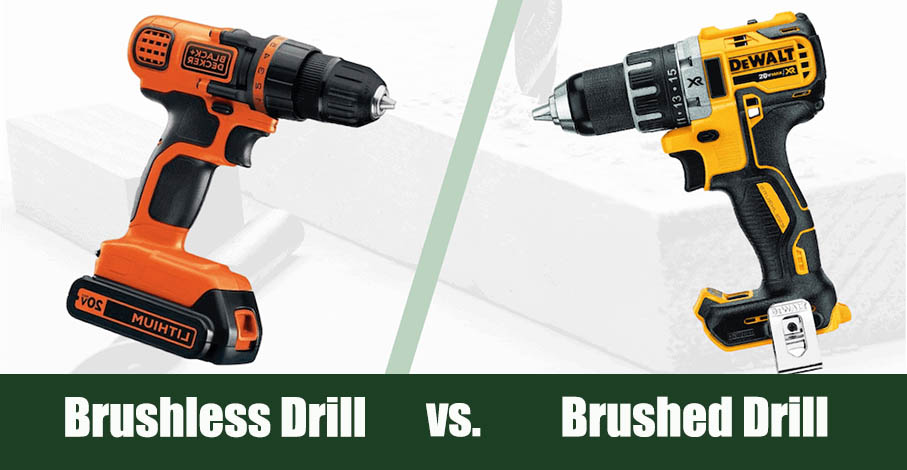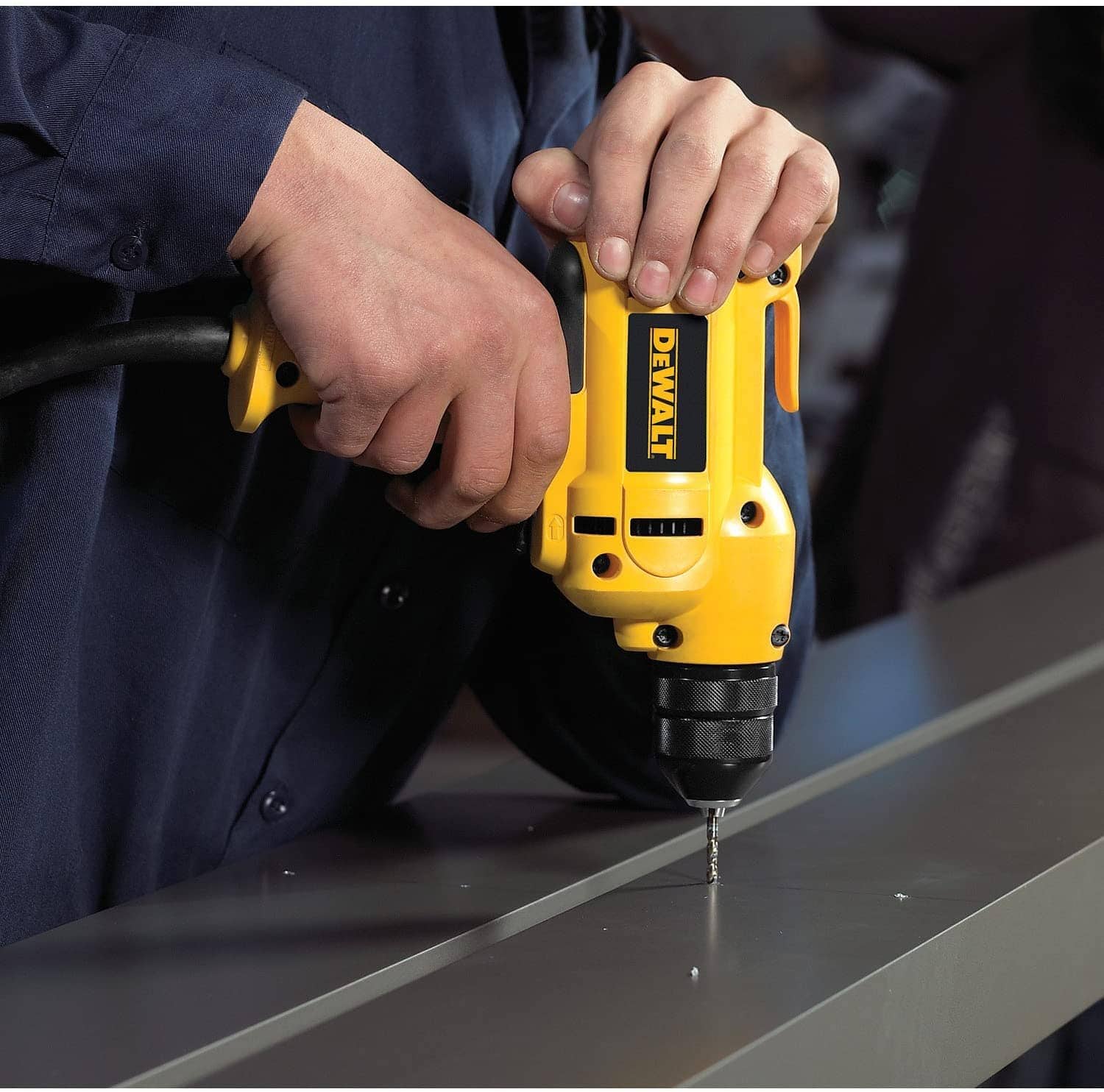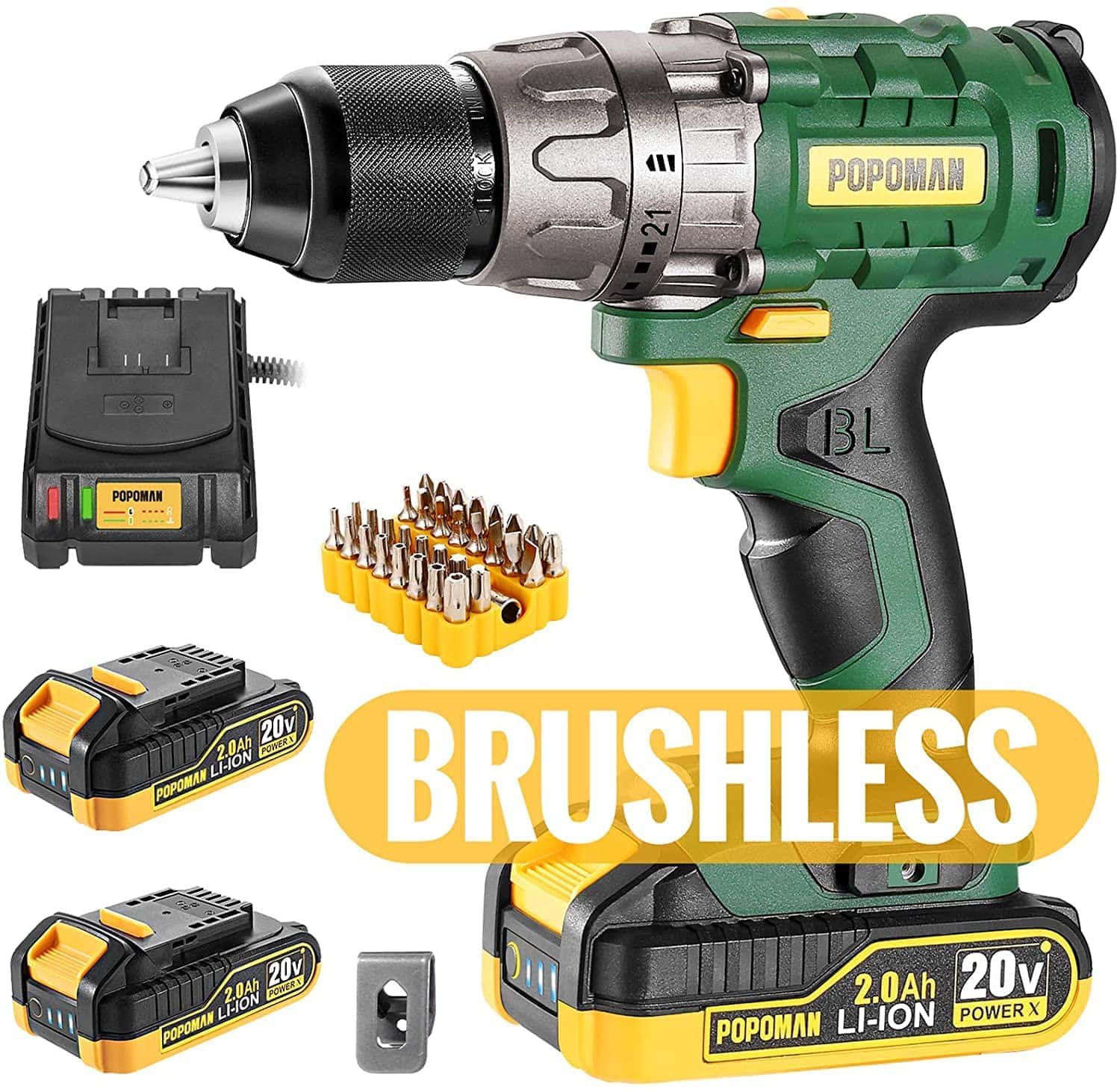Brushless vs Brushed Drill: Which is Best for Your Needs?
-
- Last updated:

If you having been paying attention to the power tool department lately, you will have noticed a new technology making the rounds. Brushless motors are all the rage right now, and the power drill has not escaped the upgrade. In fact, it is one of the more popular tools to adapt to this new motor.
Though each brand will sing praises for this new power system, the question of whether a brushless drill is better than a brushed drill still remains. Case in point; remember the hoverboard? It was those two-wheeled boards that propelled millennials around by their balancing abilities.
As exciting as that technology seemed to be, it left many people without a home after it was discovered the lithium-ion battery tended to catch on fire.
Not don’t get us wrong, the brushless motor has demonstrated its ability to not spectacularly fail. The point is, however, it never hurts to get a little bit more information on new technology before you punch in that credit card number.

What is Brushless Technology?
Before we go into the differences of a brushless or brushed drill, it’s important to understand the technology of the brushless motor itself. Don’t worry, we aren’t going to geek out on you and get super technical. Nevertheless, having a solid understanding of how these motors work will make it easier to evaluate the differences between the two, and what it means for a power drill.
Brushed Motors
As the name implies, a brushed motor has brushes that receive electricity from your power source. Picture a tube made of magnets. Inside the magnets, you have a set of large rotating teeth (otherwise known as the armature). Now, picture a rod (communicator) going through the center of the tube with brushes attached to the sides.
When you squeeze the trigger on your drill, the electricity goes to the brushes first. As the brushes are attached to the rod, it sends the electricity there next. The rod than sends that current to the rotating teeth. This is where the electrical current is turned into a magnetic field.
Keep in mind, the tube is also made of magnets. It’s the interaction of the opposing magnets that gets the teeth spinning and thus your drill moving.
Now, this is an important bit. As the brushes receive the electricity first, they are getting the most power. What’s more, the more you pull the trigger, the faster your drill will rotate-this will be important later.
Brushless Motors
One of the biggest differences between a brushless and brushed motor is the brushless motor lacks brushes (insert obvious joke). That is not the only difference, however. First, let’s start with the fact that the brushless motor could also be called a “smart motor”.
To put it in the simplest terms, this type of motor has replaced brushes with electronic sensors. It is those sensors that send signals to the magnets “telling” them how fast to go or how much torque you need. There are fewer moving parts in this drill, and the parts are smaller and more compact.
Brushed Drills
Now that you have an understanding of how the two motors work, we can get back to the question at hand. Is a brushless drill worth it? Is it better than our tried and true electric drill?
Well, let’s find out by starting with the brushed drill.

Power
This is an area where, unfortunately, the brushed motor does not live up to the brushless option. Remember how we talked about the brushes receiving the electricity first? Well, you should also note that they receive the same amount of electricity regardless of how hard you deploy the trigger. With a steady stream of electricity like that, the drill creates a lot of friction that also causes a lot of heat. Unfortunately, more heat means lower power as the friction is sapping the energy.
For example, if you were to press down hard on your drill’s trigger, you will notice it has less torque. This is because of the heat and friction of the brushes. We bet you have found yourself having to stop and let your drill cool down from time to time when working with dense materials, right? This is a downside to brushed motors.
Performance
The performance runs hand and hand with the power, but we thought it deserved its own section for a couple of reasons. The first reason we have already mentioned above. The power to torque ratio can be a bit off with this type of drill. The more power you send to the tool, the less torque the drill will give you. This brings us to our second reason.
With so much friction going on inside a brushed motor, it is bound to take its toll. One way in which it does so is by creating a downward spiral in overall performance. As the brushes are worn down from the heat, they are no longer able to send the correct amounts of power to the rest of the drill. You will notice that your drill doesn’t work as well after prolonged use.
Not only that, but you are also wasting your battery, which is our third reason. In technical terms, the friction created by the brushed motor is a not-needed by-product of the motor. What that means is that friction is wasted energy that you are draining your battery to create.
Lifespan and Maintenance
This section is both a win and a loss for the brushed drill. Let’s get the bad news out of the way first, however. As you can imagine, wasted energy and a lot of friction create a tool that is not going to last forever. Over time, the heat generated by the motor will cause not just the brushes to wear-down, but the rest of the motor, as well.
The good news is that this type of drill is easy to maintain and repair when necessary. Most power drill brands sell replacement brushes at an inexpensive rate. Not only that, but it is quite easy to remove the old ones and insert the new brushes. As this is what is draining your battery and lowering your performance, replacing the brushes can essentially give your old, comfortable drill a new lease on life.
Usability
Brushed power drills come in many different sizes and weights. For the most part, they tend to be the heavier of the two options, though. With the motor, housing, and various bits and other accessories, using a brushed drill can take a toll on your shoulders, hands, and back.
Another downside here is the noise. Now, a power drill is not a chainsaw by any means, but depending on what you are drilling through, they can be very loud. This is not always an issue, but loud tools are not usually ideal options for DIYers, apartment dwellers, etc.
Cost
A brushed drill can range in price anywhere from $20 to a couple of hundred dollars. For a good power drill that is going to provide you with the power, torque, and battery life you need, you will likely have to opt for one that has a higher price tag.
That being said, the old-school brushed motor drill is still less costly than its newer counterpart. Throw in that they are also inexpensive to repair, and you will find that this tool is the more cost-efficient way to go.

Brushless Drills
To recap, the brushed drill is a tool that has problems with torque when used at high power. They create a lot of wasted energy, and they will lose performance after a while. They are, however, cost-efficient to buy and repair.
So, what about the brushless drill? How does it compare, and does the new technology deserve its spot on your tool bench? Let’s see…

Power
When it comes to power, the brushless drill is going to win the day over the old-school version. As there are no brushes to create wasted friction (or energy), all of the power is going into the torque. You will be able to apply a significant amount of torque regardless of whether you are drilling through soft sheetrock or hard stone.
Without friction, you will not find any excess heat, either. As we all know, heat is the last thing your tool needs. It’s what will eventually run down your drill’s mechanics and cause it to lose power. With the brushless motor, the circuit board and sensors do the job of the brushes but without the wasted energy, friction, and heat.
Performance
Once again piggy-backing off the last section, the performance with this type of drill is greatly improved due to the lack of heat and friction. All of the power is directed to the job at hand. Not only that, but it improves your battery life, as well. As there is no wasted energy, your battery is using only the amount of power it needs to run the drill.
Another feature associated with the performance of this tool is the “smart” sensors. The sensors in the drill can recognize the type of material you are working on, and they will auto-adjust the power and torque. This creates less strain on the drill, plus gives you better efficiency all around. Keep in mind, not all brushless motors are capable of this, but the majority of them do.
Lifespan and Maintenance
Needless to say, without the friction, heat, and wasted energy, these power drills have a much longer lifespan than the brushed motor variety. They also have fewer moving parts that are likely to breakdown or become worn out.
On the other hand, when a brushless motor does finally call it quits the cost of repairing it is very high. You would likely have to find someone to this for you, as well. The labor time can be expensive because sensors and the other parts are not easy to repair or install. Be that as it may, you will find this option needs little to no maintenance. Without brushes, there is nothing to wear down, so you end up with a tool that has a longer life.
Usability
This is another area where the brushless tool wins the day. As you can imagine, fewer parts make for a smaller and more compact tool that is easier to handle and creates less strain on your body. What’s more, you get the same power, if not more power, from a much smaller drill than you would from a larger brushed alternative.
Another pro of the brushless is they are a lot quieter to run. Without the moving parts and friction, the brushless drills are significantly less noisy. This is a big selling point for many people that have babies, close neighbors, or otherwise don’t enjoy the sound of loud tools running in their home.
Finally, to touch on friction one last time, this type of power drill doesn’t get hot like their older cousins. Some brushed motors can not only get warm, but hot to the point that they are uncomfortable to hold. This won’t happen with a brushless drill.
Cost
This is the one major drawback of the brushless power drill. Unfortunately, they have a much higher price tag than the equivalent versions. That being said, with less maintenance, longer lifespan, and more power efficiency, the extra cost makes a lot of sense to new buyers.

Conclusion
Now that we have taken a more in-depth look at the two types of power drills, we suggest going with a brushless option. Although you may pay more initially for this tool, the overall performance and power are well worth it. Not only that, but the longer lifespan will eventually pay for itself, plus you will have less strain on your hands and arms.
We hope that you have enjoyed this review. New tools and technology can be difficult to navigate. Sometimes they are not worth the investment, and sticking with the tried and true option is to your advantage. At other times (such as this), knowing the difference between the two options can help you understand why going with the new is an all-around better decision for you, your tool, and your next project.
If you’re going to be working with a portable, battery-powered drill, then it’s a good idea to invest in a brushless drill. The motor in those drills is lighter and more efficient, which makes a huge difference in battery-powered tools. The difference is less noticeable when you’re using a wired electric tool.
If your budget is your primary concern, then you may be better off in the short term with a brushed drill. Of course, you’ll have to spend more overtime to replace the brushes, but those tend to be cheap. However, if you want to save yourself the pain of frequent maintenance, then you’ll want to get a brushless motor.
Contents

